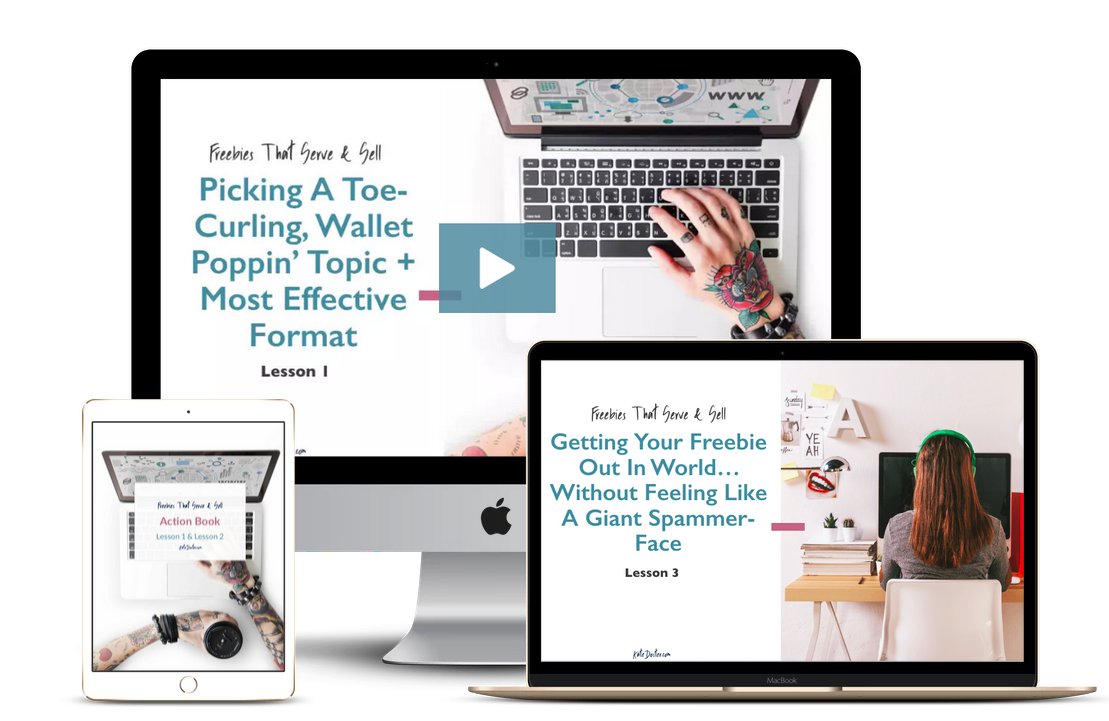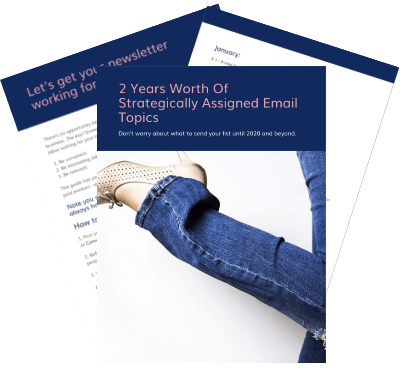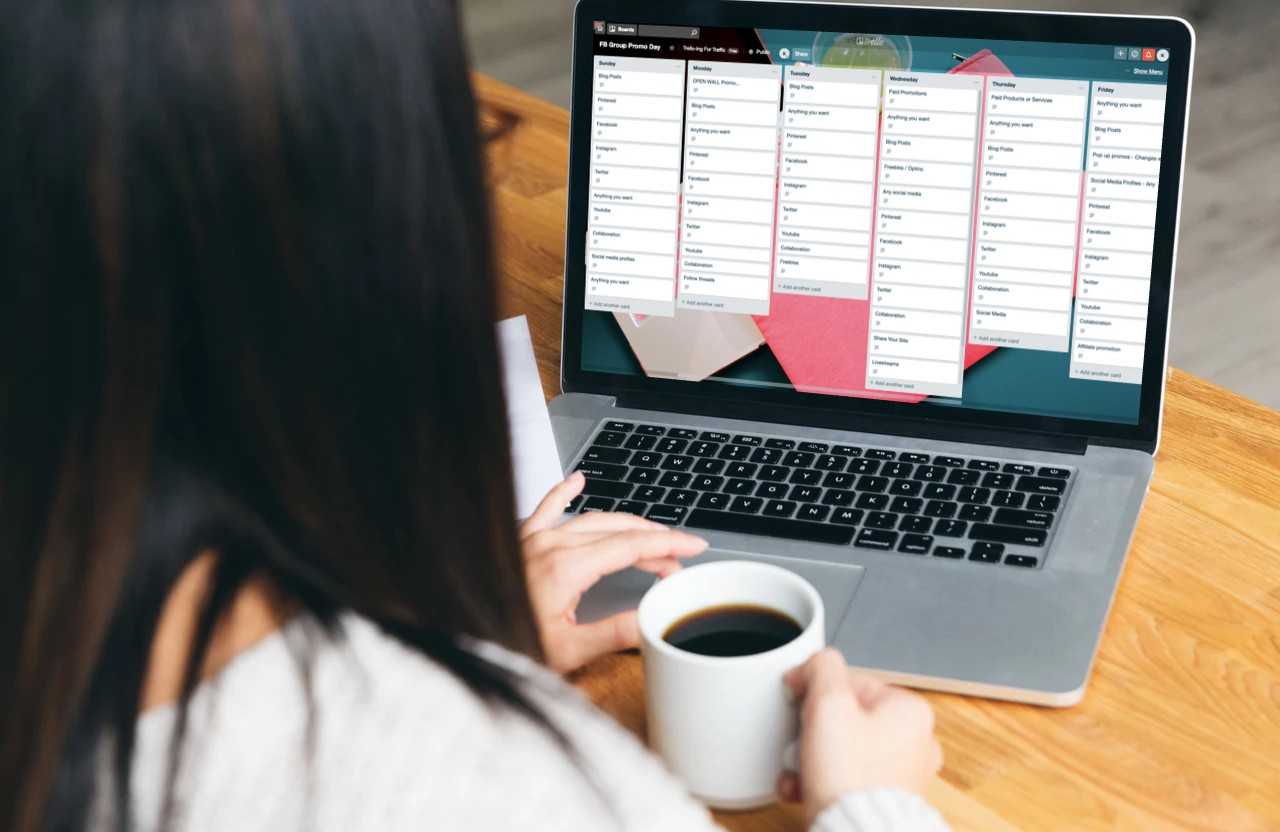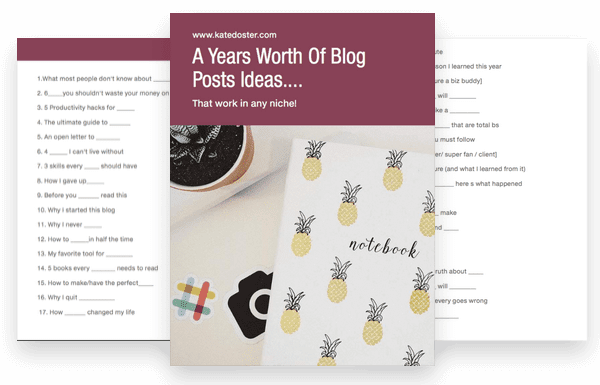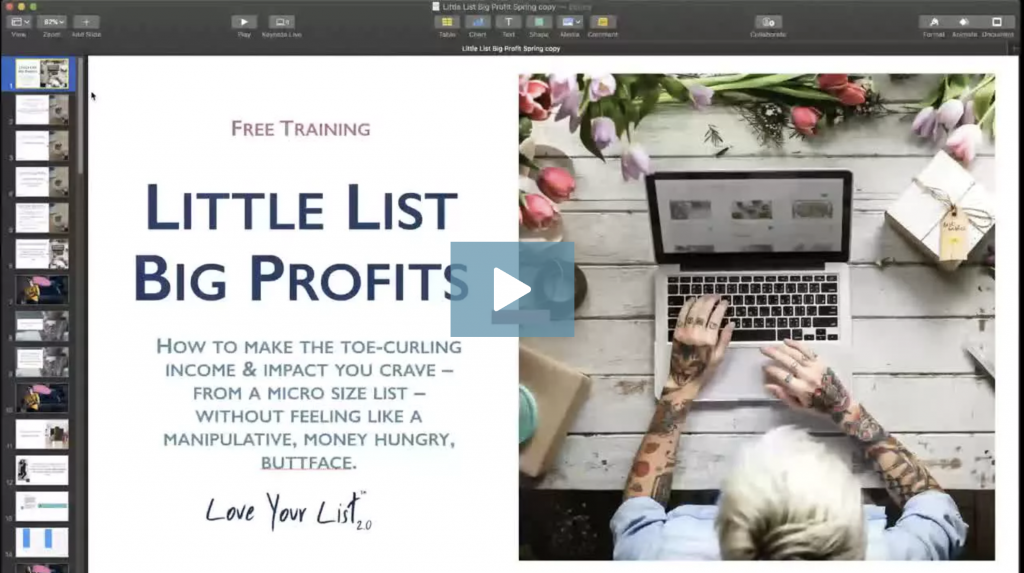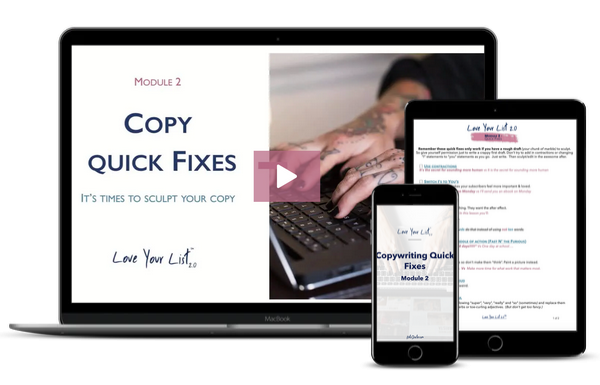Tired of wondering what should be free and what should be paid?
If you’ve been wrestling with what to give away for free versus what you paid for, read on because you’re going to learn exactly what should be free for your audience vs what you should charge for.
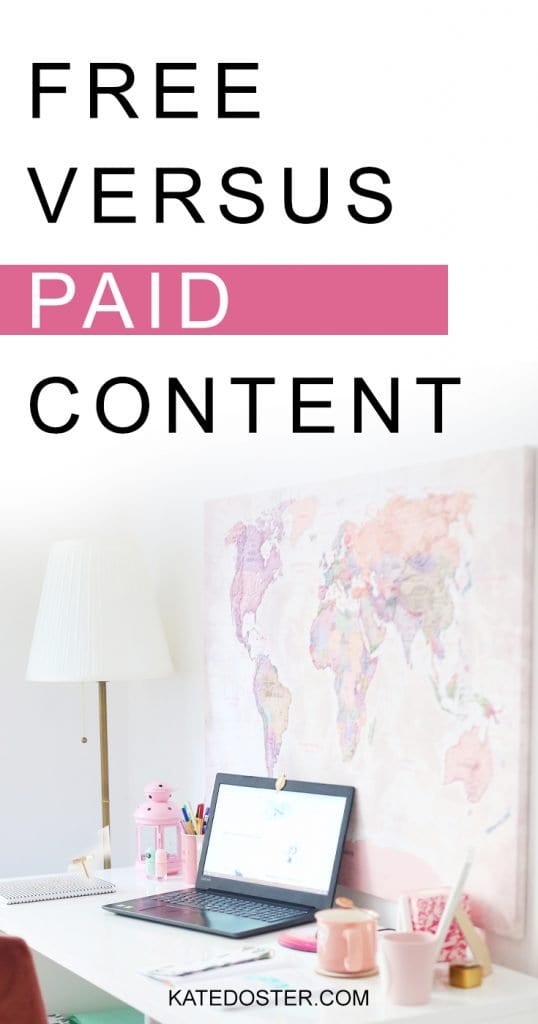 When you’re creating content for your people, sometimes it’s hard to draw the line between what should be free and what your people need to crack open their wallets for. What’s the difference and where do you draw the line?
When you’re creating content for your people, sometimes it’s hard to draw the line between what should be free and what your people need to crack open their wallets for. What’s the difference and where do you draw the line?
Your Easy Yes Offer is a small, digital product that answers a specific question or problem. It’s the next logical step for your audience to take after consuming your free gift. When you have your Easy Yes Offer in place, you’re reassuring your subscribers that you can actually help them. You’re letting them know that you have the solutions to the problems they are facing. Plus, you’re training people to pay you (which is a good thing).
Sometimes selling can make people feel phsically ill. Just remember that your new subscibers get extreme value from your Easy Yes Offer because they will actually use it. When you’re selling anything less than $45 (although your Easy Yes Offer can be any price), it makes it way more comfortable to make sales. Once you get used to getting paid for your knowledge and expertise, it gets easier for you to sell higher ticket items like a signature course or coaching program. So an Easy Yes Offer also helps you get used to selling while helping your audience overcome their challenges.
It’s a common “rule” in online marketing to “give away the why and sell the how”. What that means is in your free content, you might explain why Yoga is great for new moms and how energized they will feel afterwards but sell the “how” to do the various poses.
This can be confusing and tricky and the good news is that it doesn’t have to be that way. I give away tons of how-to’s on my blog, in my podcast, on my Facebook lives and eventually on my YouTube channel that I’m launching this year. It doesn’t have to be cut and dry. You get to decide what should be free. There are no rules. It’s your business, after all.
So how do you know where to draw the line for what should be free versus what should be paid?
There is a pivotal point for every subscriber where you should offer a paid solution instead of another piece of free content. What is that point? It’s when they get overwhelmed.
We’ve all been in 5-day challenges where the organizer gives away so much information and has so much stuff to do that we just drop out after a few days because we feel guilty that we can’t keep up (or is it just me?). I get lost and off track and instead of powering through it, I just quit. I appreciate them giving so much but the truth is, when something is free, we just aren’t going to value it or stick to it – which is also why you’re actually helping your people by having your Easy Yes Offer.
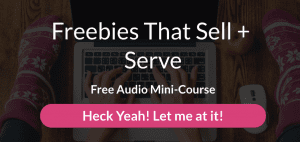
I’ve found that 5-day challenges or mini-challenges that has too much information doesn’t convert to sales. Instead, give quick wins that are digestible and doable. You want to make them feel like rock stars. The goal is to have your people feel like they have accomplished something and are hungry for the next win. That’s what we are going for, especially when it comes to our freebies.
I like to create my freebies with the signature Serve & Sell method that uses my ‘Sir Mix-a-lot Principle’ which is answering a “but”. When you’re answring a but, you’re taking away doubt. You’re letting them know that they can do the thing.
For example your Sir Mix-a-lot principle might look like this:
- I wanna make money but I don’t know how to do the tech
- I wanna grow my email list but I don’t know how
- I wanna eat healthy but I don’t know how to cook
Put yourself in the shoes of your muses, your people, the ones you are called to help. Try to make sure that your 5-day challenges address one thing a day. Just one challenge to overcome. Let your people get the win and they will be back for more. After all, you’re making them feel like a rock star, right?
As a sidenote, when you see blog posts that are ‘Ultimate Guides’, they are overwhelming and not digestible. It’s too much information. The reason so many people create them is because Google and SEO loves them. There are tools that you can use like HotJar or Sumo Tools that will show you how far down your page people get before they drop off. The truth is, not many people make it to the bottom of these ultimate guides. Their only purpose is to rank on Google.
Elna of Twins Mommy is great at creating ultimate guides but she always includes a free download so if people get halfway down and get overwhelmed, there is something for them to download and come back to. When you’re just clicking around, wasting time on Facebook or Pinterest, you’re not clicking around in a learning mode. You’re just scrolling, right? The same goes for your audience. So when you create a Facebook post or a Pin that says “How to Get Your First 500 Subscribers”, you want to give them a little something but not too much that it’s overwhelming.
I’m not saying that you can’t give away your best tips. Just don’t give it away all at once. Unless you’re creating an ultimate guide type of post for SEO purposes, there’s no need to overwhelm your people. I’ve seen Elna break up those huge posts and create a mini-blog series where she answers the same questions in her “ultimate” posts but they are broken up into smaller chunks to make them more digestible. It’s about knowing the reason behind things.
People lose blog posts. They can’t find the Pin that they saw last Tuesday. They forget about YouTube videos. I’m not saying that they are going to lost your email with their freebie but in their heads they are thinking “I can come back to this later” and then when you email them again, they will remember you and want to hear what you have to say.
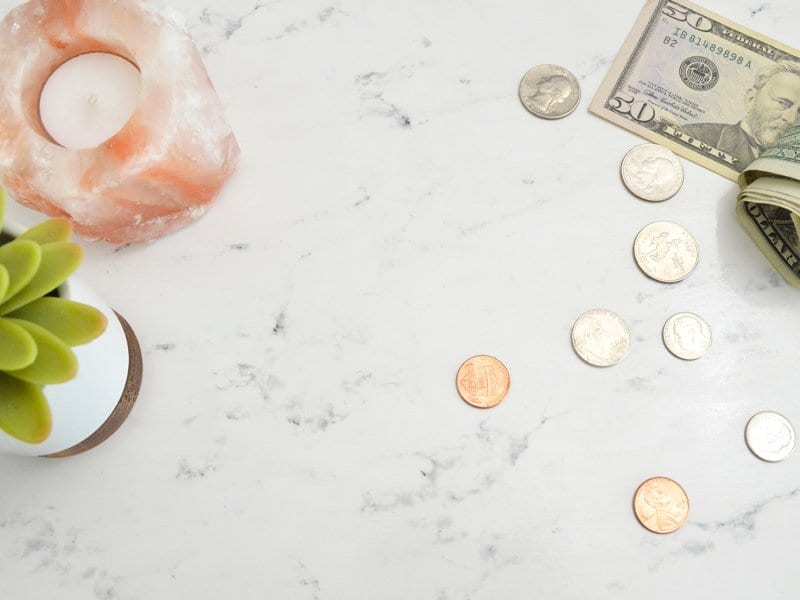
If you want to help people and you want to make money, realize that it’s the same thing.
The stuff I teach on is huge. Email marketing is not just about growing your email list. It’s also about
- Learning how to write copy
- Having things for sale
- How to talk to people
- The tech to make it all work
- And 100 other things that all contribute to making your email marketing successful
My signature course, Love Your List, is ginormous. I literally could not give it all away for free… and if I did, nobody would go through it anyway. That would mean that no one would get results. Again, when someone pays for something, they are 1,000 times more likely to actually use it and implement what they have learned.
Remember, the ulitmate reason we’re creating anything in the first place – whether it’s a blog post, a freebie or a paid offer – the reason that we create it is to get people results.
Another place I draw the line when deciding what should be free versus paid offers is anything that is a done-for-you solution.
What is done for you? Done for you is a whole system. You’ve done all the work and are just laying it out there for someone. They get the convenience of having it all done since you’ve done the work to put it all together. It’s templates, principle or spreadsheets that don’t take much (or any) effort on their part to implement what you’ve done.
If you’re selling meal plans, you might have one free meal plan but a 90-day meal plan would be a paid offer. Once someone downloads the freebie, in your email series you would address the “yea buts” from the Sir Mix-a-lot Principle:
- Yea but I have dietary restrictions
- Yea but I never go to the grocery store
- Yea but I never stick with things (that one is HUGE)
For example, if your niche is budgeting, your offer might go like this:
- Video + blog post: Free content
- Spreadsheet template: Downloadable freebie/opt-in
- Budgeting spreadsheet pack with everything they need to manage their finances: Paid
Whatever your niche is, you always want to give away steps 0 or 1 but when it’s time for the next level, that’s where your paid content kicks in. People are afraid of giving too much away and that will make their people not buy from them. By showing them the first steps and then telling them what the next step is with your paid offer, that’s how you find the balance between what should be free and what should come at a price.

What if you love teaching, you want to give your people a lot of value and you just can’t shut it off?
Amanda Frances, my money mindset coach, has this figured out and it works great for her and for her audience. She will record her livestreams and give nuggets of knowledge. She will do a 30 or 45-minute long livestream talking about one topic and answers the questions that come up fully. Of course she can’t give away every single thing she knows about money mindset or cover every angle when it comes to dealing with money on a 30 minute livestream so when she’s finishing up, she lets the viewers know that she goes more in-depth in her paid courses. Amanda leaves the video up for a short time, then takes them down and repackages them up as paid offers or bonuses in her paid programs.
If you feel called to teach and love sharing what you’re passionate about on livestreams, this could be a good model for you. Just remember that when it comes to what should be free, you draw a line whether it’s the amount of time you are on the livestream or how long you leave them up. Any access to you personally needs to be paid (and paid a lot). If someone is getting your personal attention and your eyeballs, you should be paid for that kind of attention.
There are not hard and fast rules. There is no black and white. It’s all gray.
This is your business and you get to make the rules. Everything I’m sharing here is a suggestion and what I’ve learned from my own experience.
For example, I have a lot of Trello boards. I give away a few of them but not all of them. I’m giving away a small sample so that if my people find them helpful, they can go ahead and get the rest by paying for them.
My blog posts that lead people into that paid product might be:
How to achieve your goals
or
Organizing your brain when you’re a hot-mess express (like me)
or
Tech training on how to use Trello
So I have a few how-to’s on how to get going with Trello and how to get the most out of it and then I can offer a freebie that takes people to the next step with a couple of boards they can use right now. If that helps them, then they can get Trelloing for Traffic (soon to be Trello Magic) to take their Trello boards to the next level.
You can do the same thing with your blog posts. Address concerns, give away how-to’s, offer freebies that help your people solve a small, specific problem and then the next level would be a paid product.
While there really are no rules, the only rule of thumb I swear by is drawing a line at the point where people get overwhelmed. That’s the point that people will either quit altogether or decide it’s worth it for them to get unstuck (and where your product or service comes in to the rescue).
Again, there is the one exception to giving away content that’s overwhelming and that’s the “ultimate guide” type of post to rank for SEO. If you create smaller piecesof content that has the some of the same information but package your “ultimate guide” as a freebie or opt-in, you’re going to get tons of sign-ups. People don’t read huge blog posts like that on the fly but they will gladly hand over their email address to have access to it later when they are in learning mode.
It’s impossible to give away everything you know.
When trying to find the balance between what should be paid and what should be free, remember that there is no way you can give away everything you know. Don’t let it freak you out or over-complicate it. You’re not giving away all of your secrets or shooting yourself in the foot when it comes time to sell a product later.
Over the course of five years, I’ve given away a lot of the secrets and strategies I teach in Love Your List. I have blog posts that talk about the Sir Mix-a-lot Principle, how to create a welcome series, how to position your Easy Yes Offer… and if you read through every piece of content, listen to every podcast and watch every single livestream I do, you’ll get a ton of knowledge nuggets when it comes to email marketing. I’m just able to go deeper, have everything laid out in a way that builds on each skill and give personal support in a paid program. You’ll find the same is true for your knowledge and your audience.


